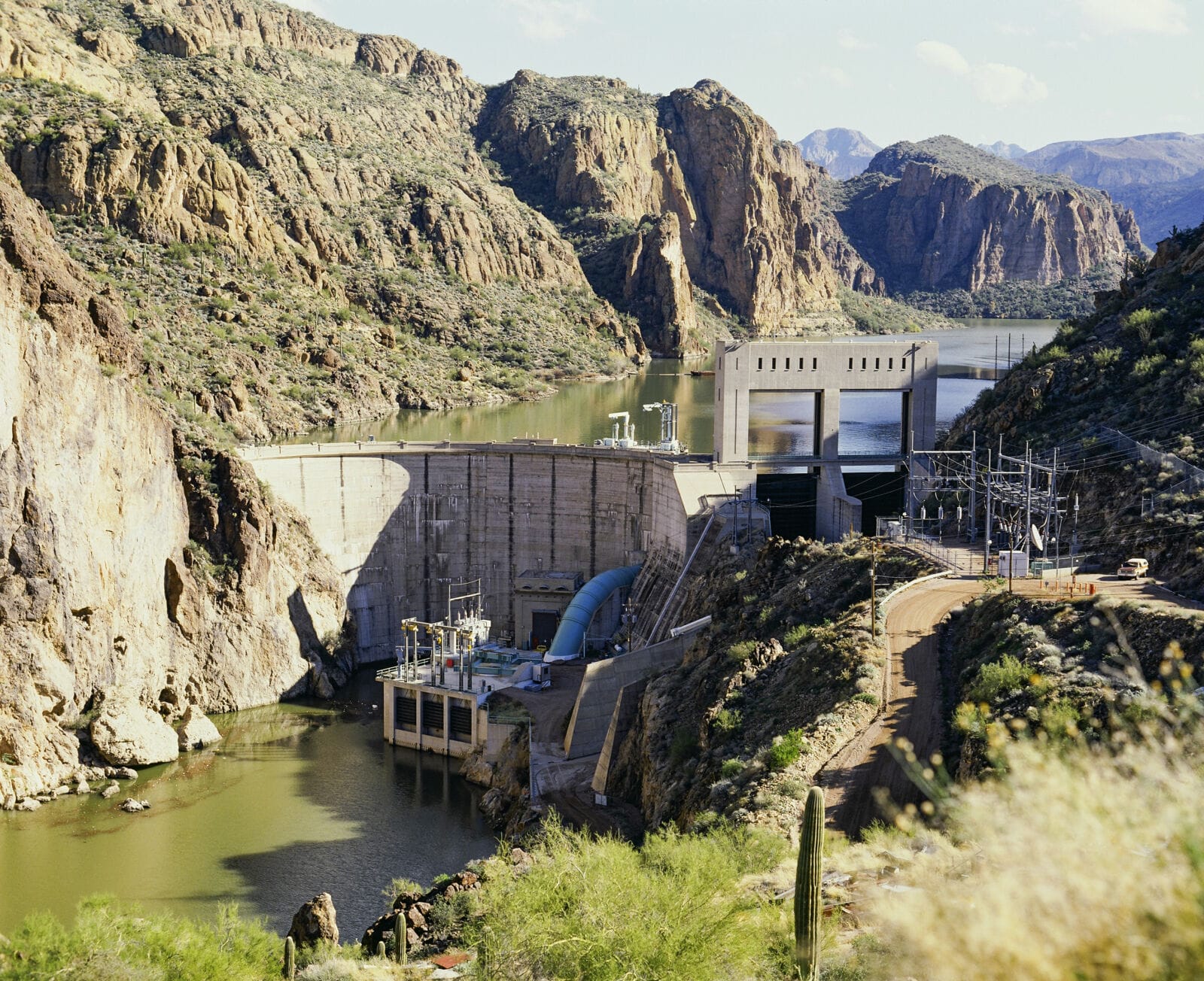Located about an hour outside the Valley, Mormon Flat Dam forms Canyon Lake: a 10-mile lake that offers boating, fishing and hiking in scenic views. But beyond making fun weekend excursions possible, Mormon Flat Dam is also a source of renewable energy thanks to a pumped storage unit that moves water up and down more than 200 feet of elevation. Today, the dam can create 60 megawatts — enough to power more than 13,000 homes.
“We’ve always used [Mormon Flat Dam] as a battery,” explains Eric Hannoush, principal engineer at SRP. “You pump [water] up when you need to store energy, and then you let it fall back down and pass through the generators to produce the same amount power back. When we’re pumping, we’re using about 60 megawatts, and we can expect about 55 megawatts back from an efficiency perspective.”
This pumped storage unit integrates well with other renewable resources. Since solar power can only be generated during the day, that energy can be used to pump water up before releasing it back down at night to create the electricity needed when the sun is down. While battery technology is improving, Hannoush notes that pumped storage is a proven technology and other batteries have a lifespan of 10 years. The unit at Mormon Flat Dam has been generating electricity since 1971, for comparison.
READ MORE: 5 things to know about Arizona water heading into 2024
Upstream of Mormon Flat Dam is Horse Mesa Dam — another pumped storage facility that generates 97 megawatts. To expand on the efficacy of the power generation method, SRP is looking at building another facility using Apache Lake as a lower reservoir, which is expected to create 2,000 megawatts of electricity.
To better understand the assets it already has, SRP leverages a 40-year-long partnership with Arizona State University (ASU). Currently, the institutions are working together on two projects. The first uses lidar technology to assess the wear-and-tear on the hydropower turbines in Mormon Flat Dam and Horse Mesa Dam. Some of the turbines have been in use for more than 50 years and can weigh nearly 50 tons, and the images obtained help determine what repairs may be needed or when a replacement may be necessary.
The second project builds on the first by creating a “digital twin” of the facility using both lidar and 360-degree cameras. This allows SRP employees to view the inner workings of the dam on their computers, saving time.
“The current process now is that we go in manually and crawl under the unit. We’re taking pictures and trying to get depth measurements to see when we need to start making repairs,” Hannoush explains. “The benefit of this project would be to have the computer develop all the reports that we can use as engineers to make recommendations for our management team about when repairs need to be implemented.”




